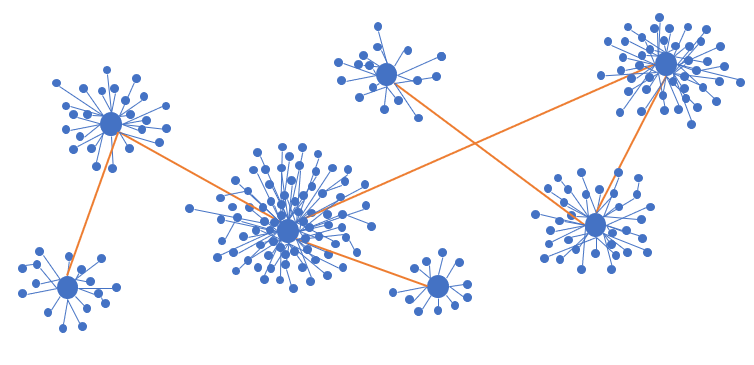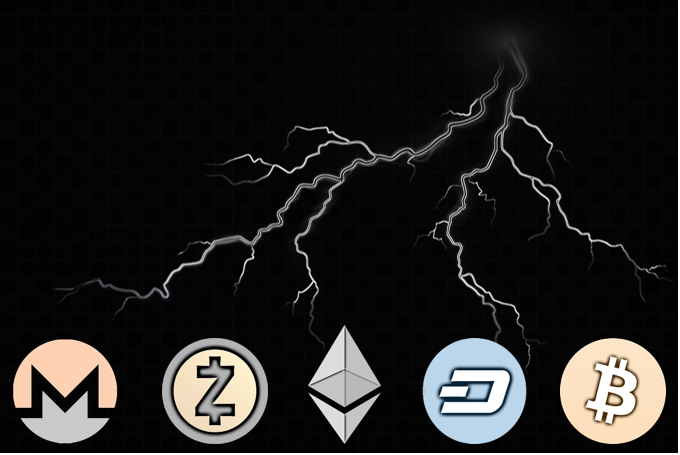(Article co-authored by Thien-Nam Dinh)
Scaling is unquestionably the biggest problem faced by cryptocurrencies today. While new interest and FOMO brings more and more money into the cryptocurrency market, it has come at a cost.

Bitcoin fees are becoming out of control. Transaction wait times are increasing. And with CryptoKitties taking off, even Ethereum has started to experience some transaction backlog.
In a previous article, I discussed a 2nd layer scaling solution called Lightning Network. If you haven’t learned about the scaling problem or Lightning Network, I suggest you read that first and then come back here.
As amazing as the Lightning Network is, it’s important to realize that it’s more than just a single protocol; it’s an entirely new concept for how to think of payments. In this article, we take a closer look at Bolt, one of the first in the next generation of advanced micropayment channel technologies.
The Power of Bidirectional Payment Channels
Lightning Network and Bolt both enable fast and cheap transactions by using bidirectional payment channels.
A payment channel is simply a connection between two parties that can be used for unlimited trustless transactions, with only the first and last of those transactions being posted on the blockchain. Bidirectional channels are those in which money can be sent from either party in the channel to the other, rather than just one way.
This concept becomes even more powerful in the context of multi-party payment channels. For example, suppose that Alice has a payment channel open with Bob and that Bob additionally has a payment channel open with Carol. With multi-party payment channels, Alice doesn’t need to open a channel with Carol to send her some money. Instead, she can send the amount to Bob, who then immediately sends the same amount to Carol.
The result, in theory, is a universal peer-to-peer payment network of nodes in which anybody connected to the network can seamlessly route money to anybody else, in a cheap, instantaneous and scalable manner.
Of course, since we are still in the world of cryptocurrencies, all of this is done trustlessly.
Problems with the Lightning Network
As cool as it may sound in theory, it is not yet clear whether Lightning Network will prove to be quite as ideal in practice.
The chief concern is that a real-world implementation of the Lightning Network may not be as fully decentralized. Instead, much like the modern internet, there might be only a few large hubs that serve as intermediaries for the vast majority of transactions.

In this type of hub-and-spoke model, an intermediary would have to know all the information about transactions that they are involved in. When Alice sends money to Carol through Bob, Bob knows both the amount that was sent as well as the identities (wallet addresses) of all parties.
What happens if Bob has the power to control not only who gets to connect to the Lightning Network, but also who gets to make a payment and when? What happens if Bob is forced to turn over these records to the FBI? (Or worse, the IRS?).
What you end up with is a network that is now prone to censorship and privacy invasion.
Of course, this isn’t the end of the world. Lightning Network will still be incredibly useful and, from a security standpoint, it is still leaps and bounds ahead of the current financial system. But, as it turns out, we can do much, much better.
What is Bolt?
Bolt is a new model that uses the latest in cryptography to accomplish the same goals as the Lightning Network, but in a way that is completely anonymous. Channel intermediaries don’t know the sender, recipient or amount of a transaction and yet, they can still verify beyond any doubt that the micropayment transaction is 100% valid.
In other words, you, as an end-user, would be totally anonymous with respect to all of the other individuals connecting to the same intermediary. In a perfectly decentralized payment, this is perhaps not as important. But the larger and more centralized the intermediary hubs are, the more useful and important your privacy becomes.
How Does Bolt Work?
Much of the security comes from the same game-theoretic incentives that the Lightning Network uses. However, Bolt makes use of two additional advanced cryptographic techniques to ensure privacy:
- Zero-Knowledge Proofs: Enables a party to mathematically prove statements about encrypted data without revealing anything about the underlying information.
- Blind Signatures: Enables a party to cryptographically sign encrypted data without needing to see the underlying data.
Imagine that instead of sending transparently signed transactions through the network that anybody can read, a Bolt user would instead send zero-knowledge proofs about their identity and current balance without revealing either piece of information.
In return, the intermediaries can sign (and therefore approve) these payments using blind signatures without being able to read the transaction. As long as the intermediary has verified the cryptography correctly, it can be sure that the user will only ever close out the channel with the correct balance.
The precise details of the scheme are somewhat more complicated. Luckily, the original white paper, designed the same Johns Hopkins researchers behind the Zcash protocol, has been rigorously peer-reviewed.
Bolt in the Real World
The technology outlined in the Bolt paper could be implemented by any cryptocurrency that satisfies a few basic requirements.
Bitcoin would only be able to support Bolt in its full capacity with some small changes. However, we all know how difficult it is to achieve consensus with Bitcoin’s governance model and passionate community, so this is probably still a long way off for the crypto giant.
The same is true for the big privacy-focused cryptocurrencies – Monero, Zcash, and Dash. Using anonymous payment channels would be particularly nice for these cryptos because the opening and closing transactions that go on the blockchain could also be anonymous. In other words, the money would be untraceable even before it enters into the micropayment channel. Given the interest in privacy in these communities, we would expect that they would be more eager to reach consensus on any necessary changes.
And then there’s Ethereum. Due to its vastly superior flexibility, implementing Bolt wouldn’t require any protocol changes whatsoever. Adding this to the scaling arsenal, along with the new privacy-centric features offered by the latest hard fork, Ethereum looks like a strong bet to scale more effectively and securely than any of its peers.
Last Thoughts
Throughout the toxic political and tribal conflicts that have plagued the cryptocurrency scaling debate, it is easy to forget that this so-called crypto-revolution begins and ends with technological innovation.
Bolt is one big step closer to realizing the original dream of a trustless, scalable, and censorship-resistant global currency. In an industry still young enough for silver bullets, Bolt might just be the next big solution.
Get all the technical details on Bolt in their whitepaper.

